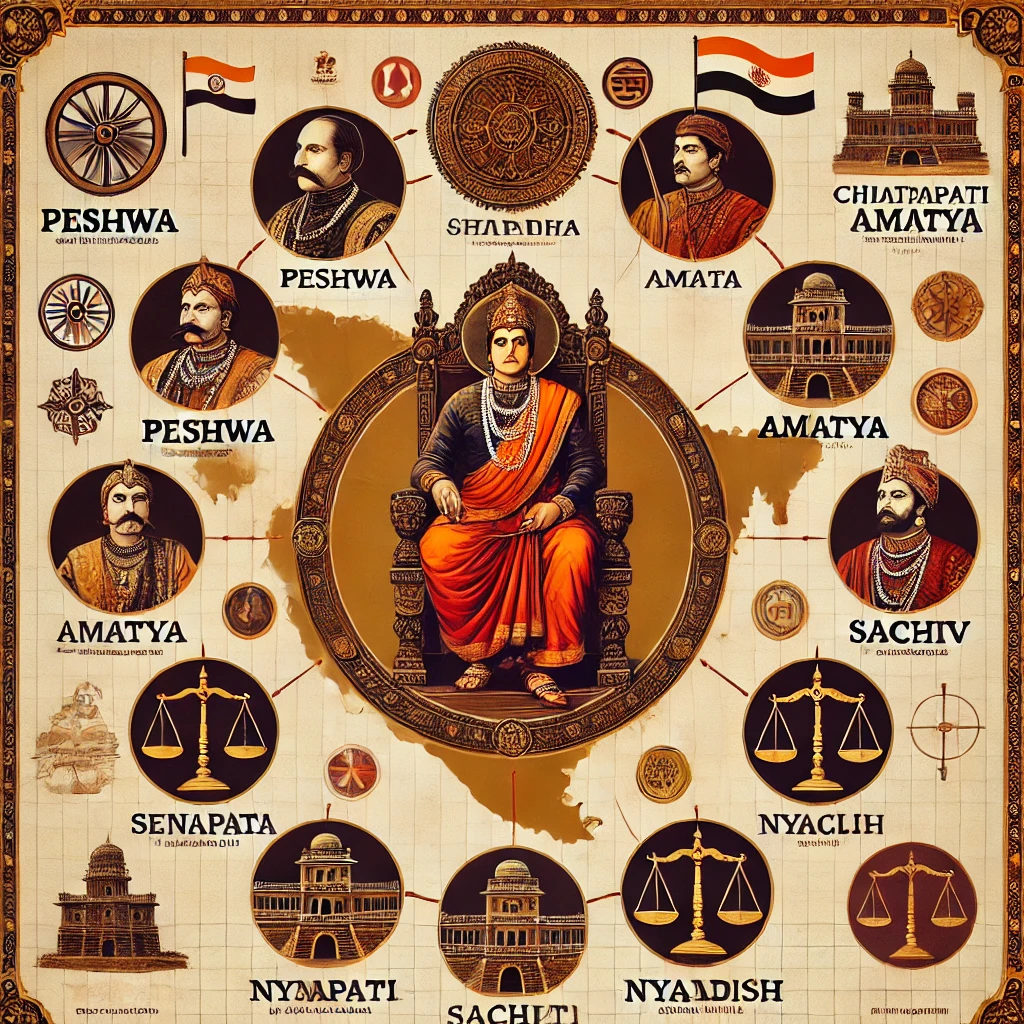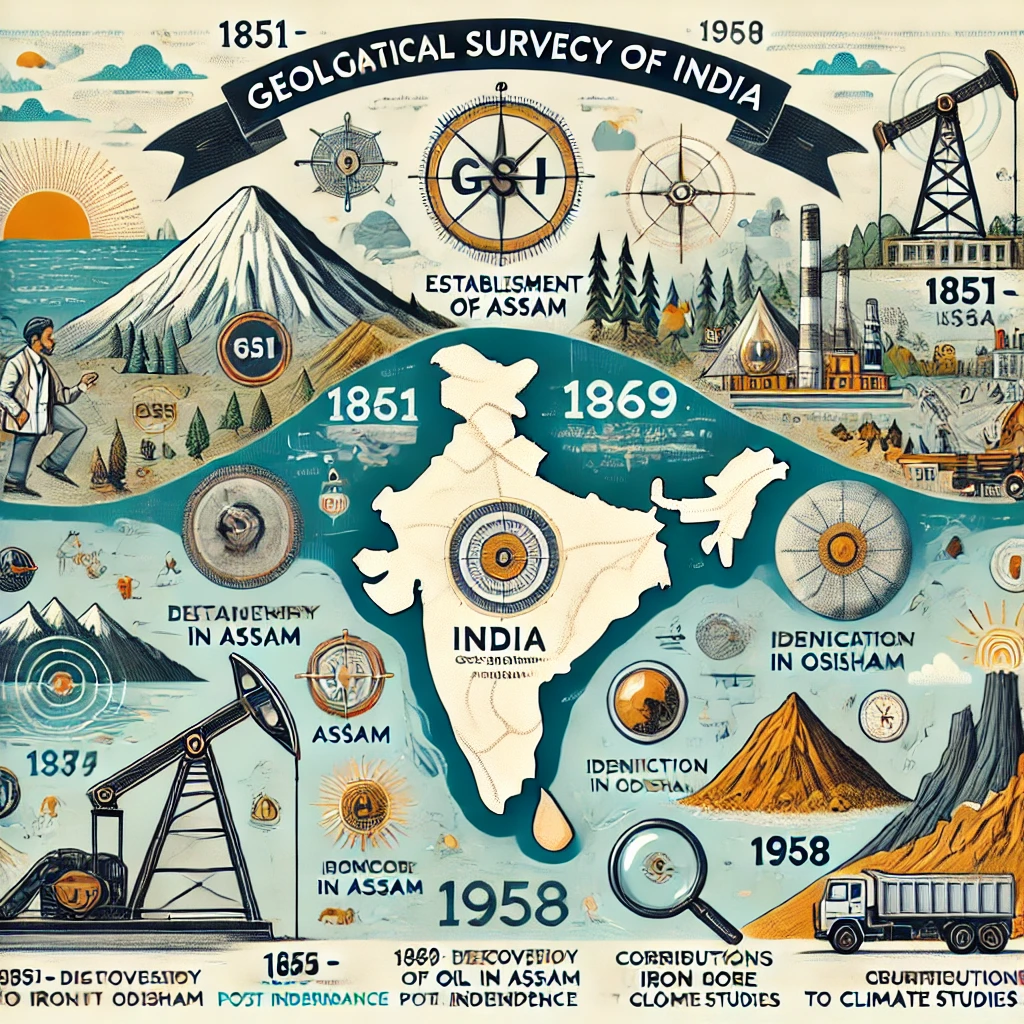The Maratha Ashtapradhan System:-
The Maratha Empire was known for its military strength, efficient administration, and innovative governance structures. One of its most remarkable contributions to Indian polity was the Ashtapradhan System. Introduced by Chhatrapati Shivaji Maharaj, this system of governance played a pivotal role in shaping administrative practices in medieval India. Understanding this system is crucial for aspirants of UPSC, UPPSC, BPSC, and other State PCS exams.
Let’s explore the Ashtapradhan System in detail and see how it laid the foundation for efficient governance.
What is the Ashtapradhan System?
The term “Ashtapradhan” is derived from Sanskrit, where “Ashta” means eight, and “Pradhan” means ministers. Therefore, the Ashtapradhan system refers to the council of eight ministers who assisted the king in governance and administration. These ministers were responsible for key areas of statecraft and helped ensure the smooth functioning of the Maratha Empire.
This system was established by Shivaji Maharaj during his coronation in 1674 and served as a model of organized and efficient administration. Each minister had a specific portfolio and was accountable for their duties.
The Eight Ministers of the Ashtapradhan System
1. Peshwa (Prime Minister)
- Role: Chief executive officer of the kingdom.
- Duties: Oversaw general administration, coordinated policies, and acted as the king’s representative in his absence.
- Key Point for Exams: Later, the Peshwas became de facto rulers of the Maratha Empire, especially during the 18th century.
2. Amatya (Finance Minister)
- Role: In charge of revenue and finance.
- Duties: Managed the kingdom’s finances, accounts, and budget.
- Key Point for Exams: The Amatya played a key role in ensuring financial stability in the empire.
3. Sachiv (Secretary)
- Role: Chief of royal correspondence.
- Duties: Handled official documentation, maintained records, and issued royal orders.
- Key Point for Exams: Ensured that communication between different departments was clear and effective.
4. Mantri (Interior Minister)
- Role: In charge of intelligence and internal affairs.
- Duties: Kept the king informed about the happenings within the kingdom.
- Key Point for Exams: The Mantri acted as the king’s eyes and ears, ensuring no internal threats.
5. Senapati (Commander-in-Chief)
- Role: Head of the military.
- Duties: Managed army operations, war strategies, and defense matters.
- Key Point for Exams: Played a critical role during battles and ensured the military remained disciplined and ready.
6. Sumant (Foreign Minister)
- Role: Managed external affairs and diplomacy.
- Duties: Negotiated treaties, handled foreign relations, and represented the kingdom in diplomatic matters.
- Key Point for Exams: The Sumant helped in maintaining peaceful relations with neighboring states.
7. Nyayadhish (Chief Justice)
- Role: Head of the judicial system.
- Duties: Administered justice and ensured the rule of law.
- Key Point for Exams: Upheld fairness and dealt with disputes according to Hindu law and customs.
8. Panditrao (High Priest)
- Role: Head of religious affairs.
- Duties: Oversaw religious ceremonies, rituals, and charitable activities.
- Key Point for Exams: Ensured that the religious aspects of governance were respected and followed.
Key Features of the Ashtapradhan System
- Division of Power: The system ensured a division of administrative tasks, preventing the concentration of power in a single individual.
- Accountability: Each minister was accountable to the king, ensuring transparency and efficiency.
- Decentralization: This model promoted decentralized governance, where ministers had autonomy within their domains.
- Merit-Based Appointments: Ministers were appointed based on merit, loyalty, and skills rather than hereditary succession.
- Checks and Balances: The system provided an effective mechanism to keep a check on corruption and misuse of power.
Why is the Ashtapradhan System Important for UPSC and State PCS Exams?
- Historical Significance: Understanding Shivaji’s administrative structure offers insights into the evolution of governance in India.
- Comparative Analysis: Helps aspirants compare medieval governance systems with modern administrative frameworks.
- Prelims and Mains: Frequently asked in History, Polity, and General Studies papers.
- Leadership and Administration: Provides lessons in leadership, delegation, and effective governance.
Sample Questions for Practice
- UPSC Prelims:
Which of the following ministers was responsible for managing foreign affairs in the Ashtapradhan system?
a) Peshwa
b) Senapati
c) Sumant
d) Panditrao - Mains Question:
Explain the role and significance of the Ashtapradhan system in the administration of the Maratha Empire. How did it contribute to the success of Shivaji’s rule?
Ace Your Preparation with SR Study’s Test Series
For comprehensive preparation of topics like the Ashtapradhan System and other important subjects for UPSC, UPPSC, BPSC, and State PCS exams, trust SR Study — your ultimate test series platform!
Why Choose SR Study?
- Expert-Curated Test Series: Designed by experienced faculty and subject experts.
- Comprehensive Coverage: Full syllabus coverage for UPSC, UPPSC, BPSC, and other State PCS exams.
- Detailed Explanations: In-depth solutions to help you understand each concept.
- Regular Updates: Stay current with the latest exam patterns and trends.
- Performance Analysis: Personalized feedback to help you identify strengths and weaknesses.
👉 Enroll Now and boost your exam preparation with SR Study! Visit SR Study for more information.
Master the Maratha Ashtapradhan System and get closer to your dream of becoming a civil servant with SR Study!
MarathaEmpire #AshtapradhanSystem #ChhatrapatiShivaji #IndianHistory #Governance #MedievalIndia #UPSCPreparation #StatePCS #CivilServices #HistoricalAdministration #MarathaHeritage #EducationalInfographic #HistoryLovers #ShivajiMaharaj #SRstudy #learn.srstudy



